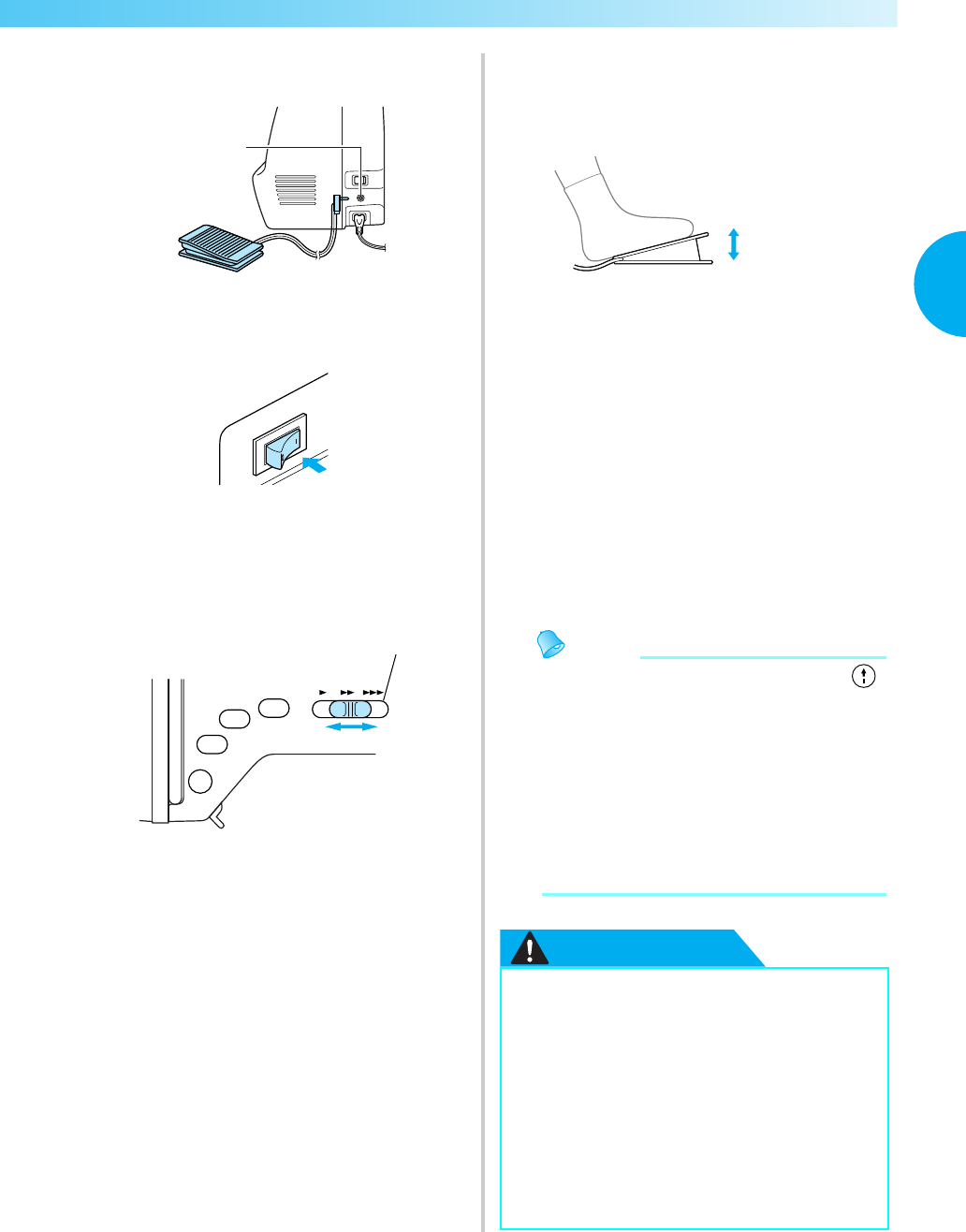
Sewing 53
2
—
— — — — — — — — — — — — — — — — — — — — — — — — — — — — — — — — — — — — — — — — — — — — — — — — — — —
—
b
Insert the foot controller plug into its jack on
the side of the sewing machine.
a Foot controller jack
c
Turn on the sewing machine.
d
Slide the sewing speed controller to the left or
right to select the desired sewing speed.
Slide the sewing speed controller to the left to
sew at a slower speed, or slide the speed
controller to the right to sew at a faster speed.
a Sewing speed controller
• The speed set using the sewing speed
controller will be the foot controller’s
maximum sewing speed.
e
Once you are ready to start sewing, slowly
press down on the foot controller.
Pressing down on the foot controller increases
the sewing speed; releasing the pressure on the
foot controller decreases the sewing speed.
• Slowly press down on the foot controller.
Pressing it down hard starts sewing too
quickly.
X The machine starts sewing.
f
When the end of the stitching is reached,
completely release the foot controller.
X The machine stops sewing with the needle
lowered (in the fabric).
g
When you are finished sewing, raise the
needle, and then cut the threads.
• For details, refer to “Cutting the thread” (page
55).
Memo
z When the foot controller is plugged in,
(“Start/Stop” button) cannot be used to start
sewing.
z When sewing is stopped, the needle remains
lowered (in the fabric). The machine can be
set so that the needle will stay up when
sewing is stopped. For details on setting the
machine so that the needle stays up when
sewing is stopped, refer to “Changing the
needle stop position” (page 61).
CAUTION
1
1
● Do not allow thread or dust to
accumulate in the foot controller,
otherwise a fire or an electric shock may
occur.
● Do not place objects on the foot
controller, otherwise damage to the
machine or injuries may occur.
● If the machine is not to be used for a long
period of time, unplug the foot controller,
otherwise a fire or an electric shock may
occur.
Slower
Faster


















